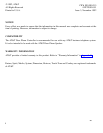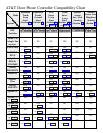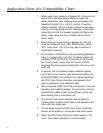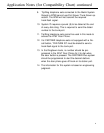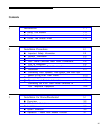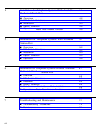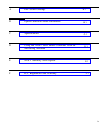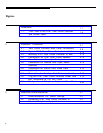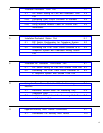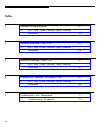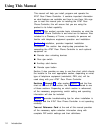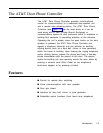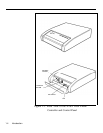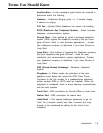
Application Notes (for Compatibility Chart)
1.
2.
3.
4.
5.
6.
7.
8.
When used in any mode of a System 25, if the user initi-
ates a call to the door and he wishes to enter the
Option Selection mode, pressing three pound keys fol-
lowed by the digit 3 (i.e., # # # 3, not # # 3) must be
entered. Actually, the first # does not seem to be recog-
nized at any time during the call. However, it should be
noted that only # # 3 is needed to enter the Option Se-
lection mode when the call is initiated from the door
button press.
When sharing a trunk port on a System 25, that port
must be configured as an “805” PBX/Centrex, not an
“801” Loop trunk. This is the only way to transmit a
hook flash to that port.
On the Merlin 1030/3070 tip and ring station application,
there is a preset delay such that the Merlin system will
disregard DTMF for the first 12 seconds of the connec-
tion. In this mode, users have the choice of either
changing that time period or waiting for it to time out for
each call.
In general, the ring-cadence option selection applies
only if there is an auxiliary alert device connected. All
of the EKTS/PBX’s will “absorb” the ringing signal from
the AT&T Door Phone Controller and generate their
own ring cadence to the telephone sets.
When using the AT&T Door Phone Controller in any con-
figuration with a Merlin System, the pound key must be
pressed twice (##) for each pound (#) sent to the unit
when dialing from a multi-button set.
Port Saver/Trunk Saver operation will not work for
Tip/Ring sets. A switch-hook flash is not passed to the
trunk port from these sets.
A trunk shared with the AT&T Door Phone Controller
should not be placed in a trunk pool with other trunks.
When the AT&T Door Phone Controller shares a C.O.
trunk, Trunk Saver operation is recommended.
iv




